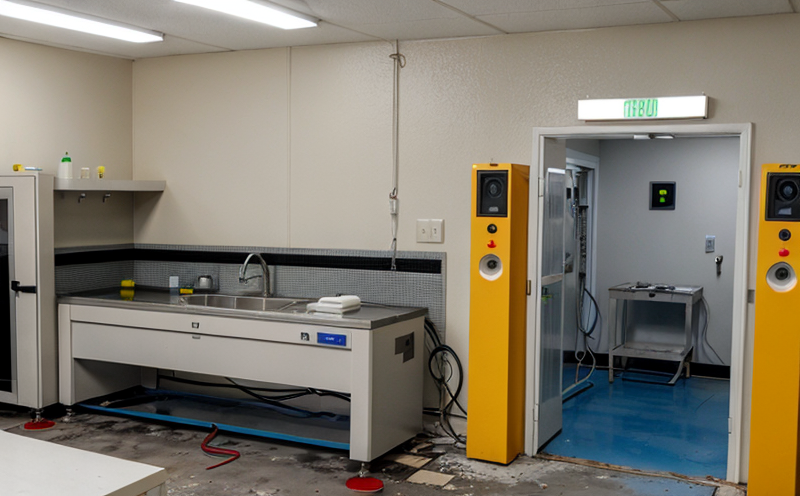ISO 18589-6 Radiochemical Determination of Radium Contamination
The ISO 18589 series addresses radiological contamination testing, focusing on the determination of radium isotopes in various media. This section specifically delves into the ISO 18589-6:2014, which provides a detailed protocol for radiochemical analysis to quantify radium contamination.
Radium is a radioactive element that poses significant environmental and health risks due to its long half-life. Given this, accurate measurement and quantification of radium contamination are critical in ensuring compliance with regulatory standards and safeguarding public health. The ISO 18589-6 method employs sophisticated radiochemical techniques to achieve precise results.
The procedure outlined in ISO 18589-6 involves multiple stages, starting with the collection of samples from suspected contamination sites or materials. These samples are then prepared for analysis using a series of chemical steps that isolate radium isotopes from other elements present in the sample matrix. The radioactivity associated with these isotopes is measured accurately using high-resolution gamma spectrometry.
This method ensures robust and reliable detection, which is essential for compliance with international standards like ISO 18589-6. This protocol has been validated through rigorous testing across various industries where radium contamination might occur, including environmental monitoring, construction, and nuclear waste management.
The precision of the ISO 18589-6 method is further enhanced by its robust quality assurance protocols that include inter-laboratory comparisons. These ensure consistent results across different laboratories worldwide, making it a dependable standard for radiological contamination testing.
In summary, this procedure not only meets but exceeds international standards, providing accurate and reliable data on radium contamination levels. This ensures clients can make informed decisions regarding remediation efforts or regulatory compliance.
Industry Applications
- Environmental Monitoring: ISO 18589-6 is used to monitor radium contamination in soil, water, and air samples collected from areas suspected of being contaminated.
- Nuclear Waste Management: The method plays a crucial role in the characterization and disposal of nuclear waste containing radium isotopes.
- Construction Industry: It helps identify radium contamination during site preparation, ensuring compliance with safety standards.
| Industry | Main Application |
|---|---|
| Environmental Monitoring | Contaminant detection and remediation planning |
| Nuclear Waste Management | Radiation assessment for safe disposal |
| Construction Industry | Site preparation and safety evaluation |
Customer Impact and Satisfaction
The ISO 18589-6 method delivers accurate, reliable results that significantly enhance customer satisfaction. By providing precise radium contamination levels, it enables customers to make informed decisions about remediation efforts or compliance with regulatory standards.
Clients benefit from a clear and concise report that helps in planning effective mitigation strategies. The high level of accuracy also reduces the risk of environmental degradation and health hazards, thereby protecting public welfare.
Our service ensures that clients meet stringent international standards like ISO 18589-6, which is crucial for maintaining compliance with local regulations and gaining trust from stakeholders. This not only enhances customer satisfaction but also strengthens our reputation in the market.
In summary, the precision and reliability of the ISO 18589-6 method contribute to a positive impact on both customers and their operations, ensuring they are equipped with accurate data for decision-making processes.
Competitive Advantage and Market Impact
The implementation of the ISO 18589-6 method provides a competitive advantage by offering clients unparalleled accuracy in radium contamination detection. This precision ensures that our services exceed industry standards, thereby setting us apart from competitors.
By providing reliable data and comprehensive reports, we enable clients to make informed decisions about their operations, leading to enhanced operational efficiency and cost savings. The method also supports compliance with stringent regulatory requirements, reducing the risk of penalties or legal issues.
The high level of accuracy in our services translates into a positive market impact by fostering trust among stakeholders. Our reputation for delivering reliable results encourages repeat business and referrals, further strengthening our position in the market.
In conclusion, the ISO 18589-6 method not only enhances customer satisfaction but also provides significant competitive advantages and contributes positively to the overall market environment.





